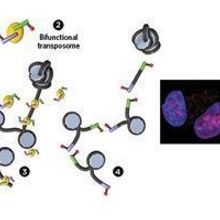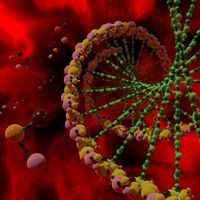Login
Subscribeinfographic, genetics & genomics

Infographic: An Incredible Journey
Christie Wilcox, PhD | Feb 1, 2023 | 1 min read
Chinook make their way up the Klamath River every year, but fewer and fewer arrive in the spring.

Timeline: An Extended Battle
Christie Wilcox, PhD | Feb 1, 2023 | 3 min read
Various concerned groups have been petitioning NOAA Fisheries to list spring-run Chinook salmon in Oregon and Northern California for over a decade.

Infographic: The Sequencing and Assembly of the Human Genome
Brianna Chrisman and Jordan Eizenga | Sep 1, 2022 | 5 min read
With ever-advancing genetic technologies, researchers continue to document the genetic code of the human species.

Infographic: Chromosome Errors Cause Micronuclei and Drive Cancer
Samuel F. Bakhoum | Mar 1, 2022 | 2 min read
When micronuclei rupture, chromosomes break, recombine, and form circles, causing inflammation and promoting carcinogenic growth.

Infographic: Anatomical Construction by Cell Collectives
Michael Levin | Sep 1, 2020 | 3 min read
Understanding this complex and still largely enigmatic process will pave the way for researchers to control the development of new morphologies.

Infographic: Dialing Down the Glitz
Rachael Moeller Gorman | Sep 1, 2020 | 1 min read
The gene BCO2 enables male and female members of some bird species to display dramatically different color patterns.

Infographic: DNA Isn’t Always Right-Handed
Rachel Brazil | Jun 1, 2020 | 1 min read
When the nucleic acid spirals to the left, it takes on a zig-zag shape known as Z-DNA that appears to regulate RNA editing.

Infographic: Building an Artificial Chromosome
Ruth Williams | Nov 1, 2019 | 1 min read
Integrating a specialized histone into large segments of transgenic DNA enables centromere formation.

Infographic: How Stray DNA Can Land in Double-Strand Breaks
Katarina Zimmer | Mar 1, 2019 | 1 min read
A study on yeast illuminates how insertions may occur.

The Best Multimedia of 2017
Catherine Offord | Dec 27, 2017 | 3 min read
Editors’ picks of the year’s best in The Scientist infographics.

Genes’ Composition Guides More-Optimal Diets
Ruth Williams | Jun 1, 2017 | 2 min read
Fruit flies and mice grow better and eat less when the amino acid balance of their food reflects that coded by their exomes.

Infographic: Cook Up an Exome-Based Diet
Ruth Williams | May 31, 2017 | 1 min read
See how scientists designed food with amino acid compositions based on protein-coding regions in the genomes of mice and fruit flies.

Infographic: Single-Cell CRISPR Screens
Ruth Williams | Feb 28, 2017 | 1 min read
See how two new methods track responses to unique genetic manipulations in numerous individual cells in parallel.

RNA Sequences Don’t Predict In Vivo Transcript Structure
Catherine Offord | Jan 1, 2017 | 3 min read
Eukaryotes prevent secondary RNA structures called G-quadruplexes, commonly observed in vitro, from forming in the cell.

Infographic: Examining Open Chromatin
Ruth Williams | Dec 31, 2016 | 1 min read
See how researchers visualize regions of active genes.

Infographic: Keeping RNA Structures in Line
Catherine Offord | Dec 31, 2016 | 1 min read
Scientists find fewer RNA G-quadruplexes in vivo than in vitro.

Ciliates Are Genetic-Code Deviants
Karen Zusi | Sep 30, 2016 | 1 min read
Traditional stop codons have a double meaning in the protozoans' mRNA, sometimes calling for an amino acid during translation.

Scientists Catch Translation in the Act
Ruth Williams | Sep 30, 2016 | 1 min read
Newly developed techniques from four different groups rely on the same basic steps to track translation in live cells.

Infographic: How CRISPR Works
Carina Storrs | Feb 28, 2014 | 1 min read
Here’s how guide RNAs and the Cas9 enzyme work together to edit DNA.
